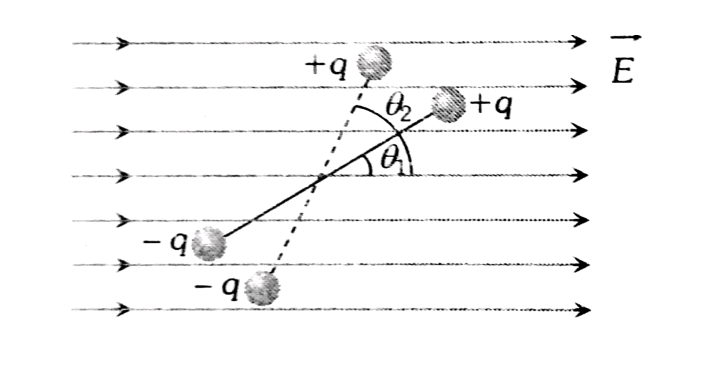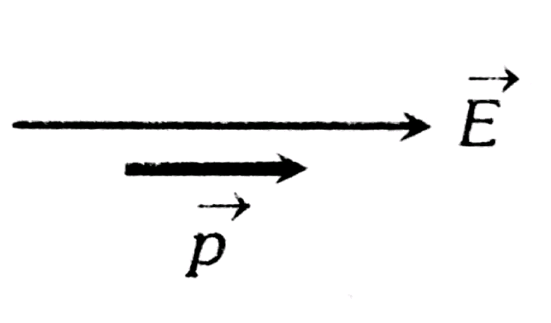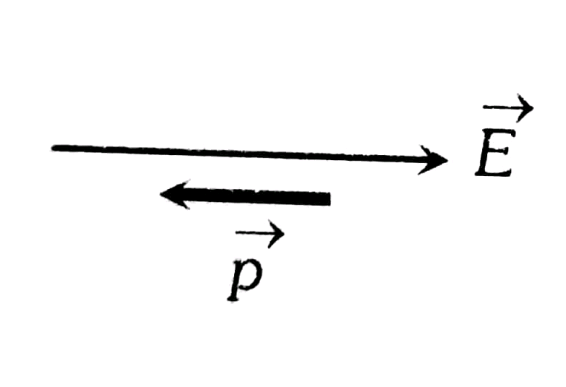Potential Energy Of A Dipole In An Electric Field - Practice Questions & MCQ
Quick Facts
-
19 Questions around this concept.
Solve by difficulty
Electric charges $q, q,-2 q$ are placed at the corners of an equilateral triangle ABC of side l. The magnitude of the electric dipole moment of the system is
When an electric dipole $\vec{p}$ is placed in a uniform electric field $\vec{E}$ then at what angle between $\vec{p}$ and $\vec{E}$ the value of torque will be maximum
A molecule with a dipole moment p is placed in an electric field of strength E. Initially the dipole is aligned parallel to the field. If the dipole is to be rotated to be anti-parallel to the field, the work required to be done by an external agency is
JEE Main 2026: Official Website | Top 30 Most Repeated Questions
JEE Main Prep: Study Plan | Preparation Tips | High Scoring Chapters and Topics
JEE Main QP & Mock: Previous 10 Year Questions | Chapter Wise PYQs | Mock test Series
JEE Main Most Scoring Concept: January 2025 Session | April 2025 Session
For stable equilibrium, the angle between dipole moment $\vec{p}$ and electric field $\vec{E}$ must be:
If we place an electric dipole S in a uniform electric field W. The dipole has minimum potential energy when the angle between S and W in degrees will be
Concepts Covered - 1
When a dipole is kept in a uniform electric field. The net force experienced by the dipole is zero as shown in the below figure.
I.e Fnet = 0

But it will experience torque. And Net torque about the center of dipole is given as
$\tau=Q E d \sin \theta$ or $\tau=P E \sin \theta$ or $\vec{\tau}=\vec{P} \times \vec{E}$
Work done in rotation-

Then work done by electric force for rotating a dipole through an angle $\theta_2$ from the equilibrium position of an angle $\theta_1$ (As shown in the above figure) is given as
$
\begin{aligned}
& W_{e l e}=\int \tau d \theta=\int_{\theta_1}^{\theta_2} \tau d \theta \cos \left(180^0\right)=-\int_{\theta_1}^{\theta_2} \tau d \theta \\
& \Rightarrow W_{e l e}=-\int_{\theta_1}^{\theta_2}(P \times E) d \theta=-\int_{\theta_1}^{\theta_2}(P E \operatorname{Sin} \theta) d \theta=P E\left(\cos \Theta_2-\cos \Theta_1\right)
\end{aligned}
$
And So work done by an external force is $W=P E\left(\cos \Theta_1-\cos \Theta_2\right)$
For example
$
\begin{gathered}
\text { if } \Theta_1=0^{\circ} \text { and } \Theta_2=\Theta \\
W=P E(1-\cos \Theta) \\
\text { if } \Theta_1=90^{\circ} \text { and } \Theta_2=\Theta \\
W=-P E \cos \Theta
\end{gathered}
$
Potential Energy of a dipole kept in Electric field-
As $\Delta U=-W_{e l e}=W$
So change in Potential Energy of a dipole when it is rotated through an angle $\theta_2$ from the equilibrium position of an angle $\theta_1$ is given as $\Delta U=P E\left(\cos \Theta_1-\cos \Theta_2\right)$
$
\begin{aligned}
& \text { if } \Theta_1=90^{\circ} \text { and } \Theta_2=\Theta \\
& \Delta U=U_{\theta_2}-U_{\theta_1}=U_\theta-U_{90}=-P E \cos \Theta
\end{aligned}
$
Assuming $\Theta_1=90^{\circ}$ and $U_{90^{\circ}}=0$
we can write $U=U_\theta=-\vec{P} \cdot \vec{E}$
Equilibrium of Dipole-
1. Stable Equilibrium-
$
\begin{aligned}
& \Theta=0^{\circ} \\
& \tau=0 \\
& U_{\min }=-P E
\end{aligned}
$

2. Unstable Equilibrium-
$\begin{aligned} & \Theta=180^{\circ} \\ & \tau=0 \\ & U_{\max }=P E\end{aligned}$
Note-
When $\Theta=90^{\circ}$
then $\tau_{\text {max }}=P E$ and $U=0$
and it is important to note here that dipole is not in equilibrium since $\tau_{\max } \neq 0$
Study it with Videos
"Stay in the loop. Receive exam news, study resources, and expert advice!"

